I know how tough it can be to deal with cancer. It feels like a huge mountain to climb. But, with the right info and support, we can take charge of our health. This guide aims to give you the knowledge and tools to be part of your cancer care.
Key Takeaways
- Gain a comprehensive understanding of cancer and its various forms
- Recognize the common early warning signs and symptoms to seek medical attention
- Explore the latest diagnostic tests and procedures used to detect and stage cancer
- Learn about the different cancer treatment modalities, including surgery, chemotherapy, and radiation therapy
- Discover how targeted therapies and immunotherapy are revolutionizing cancer care
- Understand the importance of managing side effects and maintaining quality of life during treatment
- Explore supportive care options and resources to address the physical, emotional, and spiritual needs of cancer patients
Understanding Cancer: An Overview
Cancer is a complex disease that affects millions globally. It’s about abnormal cells growing and spreading without control. These cells, known as tumors, can harm nearby tissues and even spread to other parts of the body.
Many things can cause cancer, like genes, environment, and lifestyle. Researchers are working hard to understand how cancer starts. They study the changes in cancer cells to find new treatments that target the root causes of malignancy.
Cancer can greatly affect a person’s health and life. It can cause many symptoms, from pain to serious organ problems. It also brings emotional challenges, like fear and the need for support.
Knowing about cancer helps people make better health choices and improve their outcomes. By keeping up with cancer research and treatments, people can take charge of their health. They can work with doctors to create a care plan that’s right for them.
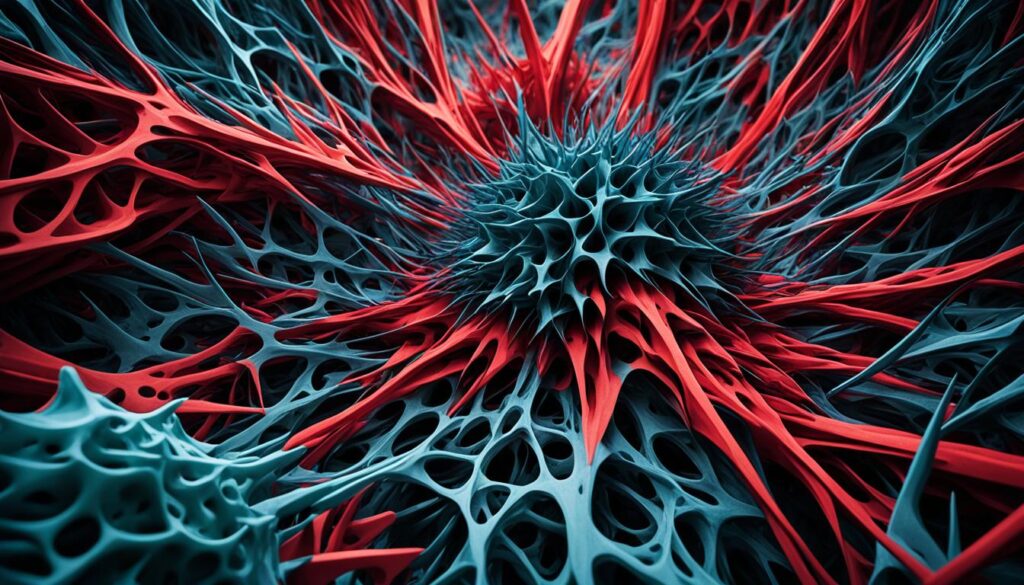
“Cancer is a complex disease that requires a multifaceted approach to understanding and treatment.”
Early Warning Signs and Symptoms
Knowing the early signs of cancer is key to getting timely treatment. By spotting common indicators, people can act fast and boost their chances of beating cancer.
Common Cancer Symptoms to Watch For
Cancer shows up in many ways. Being alert to these signs can help catch it early:
- Unexplained changes in the body, such as lumps, bumps, or abnormal growths
- Persistent aches, pains, or discomfort that do not subside
- Unexplained weight loss or changes in appetite
- Unusual bleeding or discharge from any part of the body
- Persistent cough or hoarseness of voice
- Difficulty swallowing or changes in bowel movements
When to Seek Medical Attention
If you notice any cancer symptoms, see a doctor right away. Regular check-ups and early detection are key in fighting cancer. They can greatly improve treatment chances and outcomes.
Don’t wait to talk to a healthcare professional, even if symptoms seem minor or not related. They can run tests and give the right advice.

“Early detection is the key to improving cancer survival rates. By recognizing the warning signs and seeking prompt medical attention, individuals can take proactive steps in their healthcare.”
Being watchful and taking charge of your health is crucial in fighting cancer. Stay updated, pay attention to your body, and keep up with medical checkups for the best results.
Diagnostic Tests and Procedures
Finding out you have cancer is a big step in getting the right treatment. Doctors use many tests and procedures to figure out what kind and how far the cancer has spread. This info is key to making a treatment plan.
A doctor’s first step is a physical check-up. They look for any signs of cancer like lumps or unusual growths. This helps them focus on what might be causing the issue and if more tests are needed.
Scans like X-rays, CT scans, MRIs, and PET scans are very important too. They let doctors see inside your body. They can spot tumors or other issues and tell how big they are and where they are.
Sometimes, a biopsy is needed to check if there’s cancer. This means taking a small sample of tissue. Then, doctors look at it under a microscope to see if there’s cancer and what type it is.
- Physical examination
- Imaging scans (X-rays, CT, MRI, PET)
- Biopsy
It’s important to work with your healthcare team during these tests. They will explain everything to you and make sure you get a full check-up. This helps them create a good plan for your treatment.
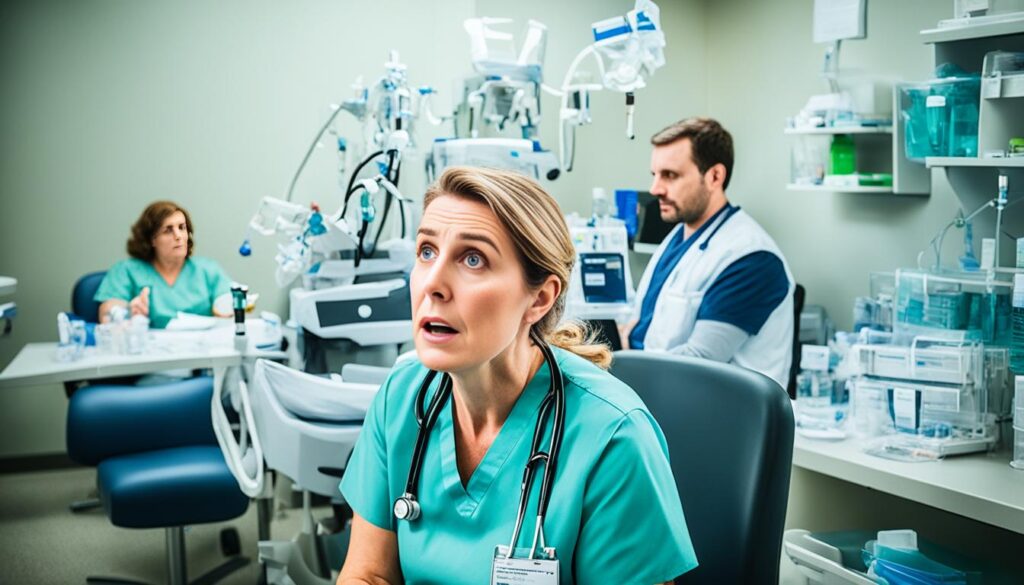
| Diagnostic Test | Purpose | Insights Provided |
|---|---|---|
| Physical Examination | Initial assessment of visible or palpable signs | Identify potential areas of concern for further investigation |
| Imaging Scans | Visualize internal structures and detect abnormalities | Determine size, location, and spread of tumors |
| Biopsy | Obtain tissue sample for microscopic analysis | Confirm the presence and type of cancer |
Cancer Treatments: A Comprehensive Approach
Treating cancer often means using a mix of therapies. This approach targets the disease from different sides. Surgical and chemotherapy are key parts of this strategy.
Surgery: Removing Cancerous Growths
Surgery is a big part of cancer treatment for many patients. Skilled surgeons remove tumors or growths. This helps get rid of the disease’s source.
Depending on the cancer type and stage, surgery can be more or less invasive. It might mean taking out the whole tumor or just a part of it.
The aim of surgery is to take out as much cancer as possible while saving healthy tissue. This is a complex task that needs skilled surgeons and teamwork with other specialists.
Chemotherapy: Targeting Cancer Cells
Chemotherapy is another key cancer treatment. It uses drugs to kill cancer cells that grow fast. These drugs can go into the body through veins or by mouth.
Chemotherapy can be used alone or with other treatments like radiation. The type of chemotherapy depends on the cancer type, stage, and the patient’s health.
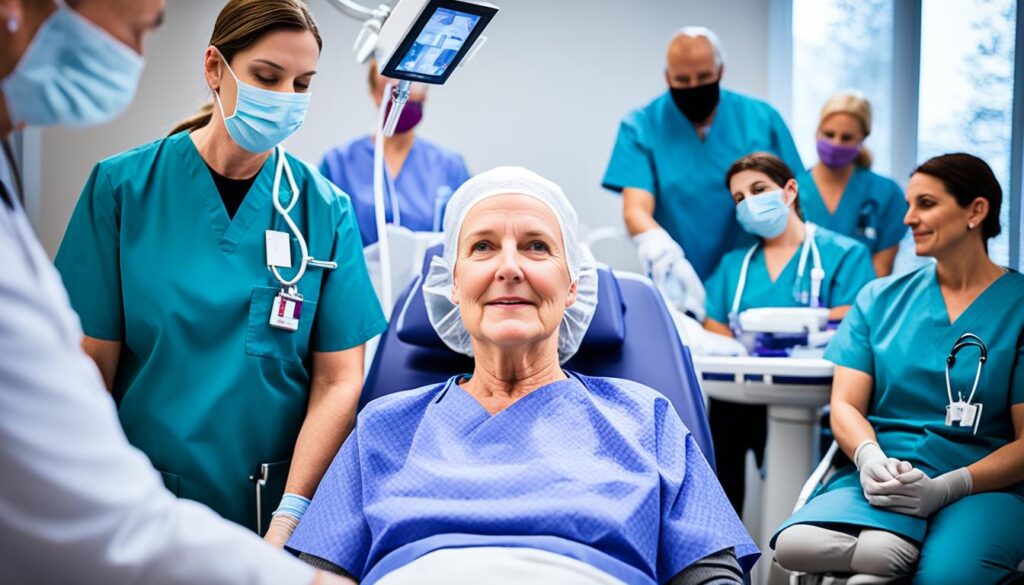
By combining these approaches, doctors can create treatment plans that fit each patient’s cancer needs. This teamwork is crucial in fighting this complex disease.
Radiation Therapy: Using High-Energy Beams
Cancer treatments have evolved a lot, and radiation therapy is a key part of fighting this disease. As a top oncology expert, I want to explain how this cancer treatments method works. It’s all about using high-energy beams to target and kill cancer cells.
Radiation therapy uses beams like X-rays or protons to hit and destroy cancer cells. It doesn’t remove tumors like surgery does. Instead, it changes the DNA in cancer cells so they can’t grow or multiply. This way, it’s very precise and tries not to harm healthy cells nearby.
There are different ways to do radiation therapy, each with its own benefits. For example, external beam radiation comes from a machine outside the body. Brachytherapy puts radioactive sources right into or near the tumor. These methods can be used alone or with other cancer treatments like chemo or surgery for the best results.
| Radiation Therapy Technique | Description |
|---|---|
| External Beam Radiation Therapy | Delivers high-energy beams from a machine outside the body, targeting the tumor. |
| Brachytherapy | Involves placing radioactive sources directly into or near the tumor. |
| Proton Beam Therapy | Uses protons, rather than X-rays, to deliver targeted radiation with greater precision. |
Radiation therapy is a key part of treating cancer and often works with other treatments for the best results. Knowing how it works helps patients make good choices for their cancer care. They can work with their healthcare team to find the best treatment plan.
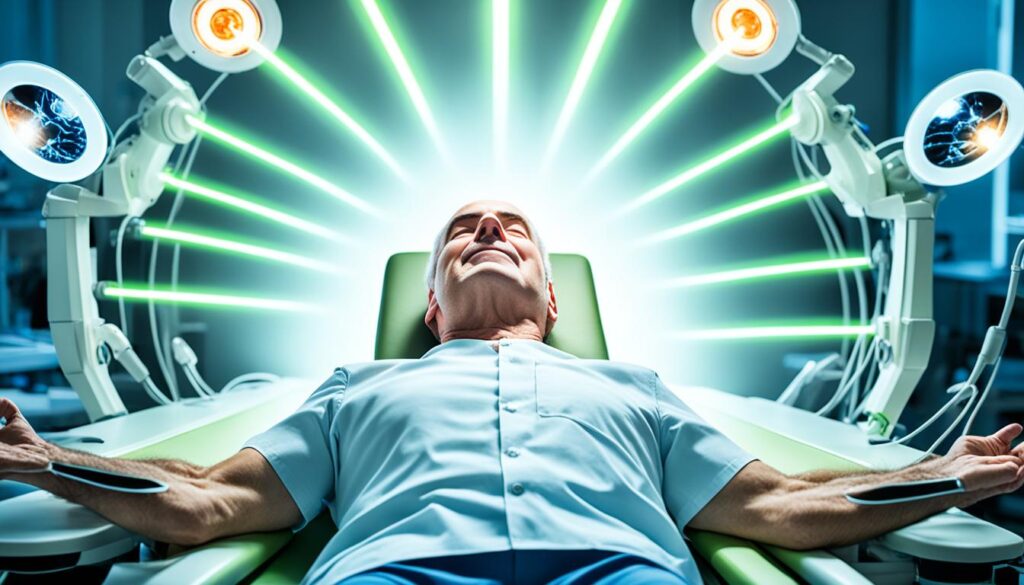
“Radiation therapy is a highly effective cancer treatments that can significantly improve outcomes for patients, when used as part of a comprehensive care plan.”
Targeted Therapies and Immunotherapy
The way we treat cancer has changed a lot with targeted therapies and immunotherapies. These new methods use precision medicine to target cancer cells without harming healthy ones. They are different from old treatments that hurt both cancer and healthy cells.
These new treatments aim at the specific things that make cancer grow in each person. This means they can be more effective and cause fewer side effects.
Precision Medicine in Cancer Treatment
Precision medicine is a new way to treat cancer by looking at each patient’s cancer closely. Doctors can then choose treatments that fit the patient’s cancer best. This approach helps avoid harming healthy cells.
Targeted therapies stop cancer cells from growing by targeting specific molecules. They can block genes that help cancer grow or stop new blood vessels from forming in tumors.
Immunotherapy uses the body’s immune system to fight cancer. It can help the immune system work better against cancer. Some immunotherapies use special immune cells or antibodies to find and destroy cancer cells.
Adding precision medicine to cancer care has made a big difference. Patients now have better responses, live longer, and have a better quality of life.
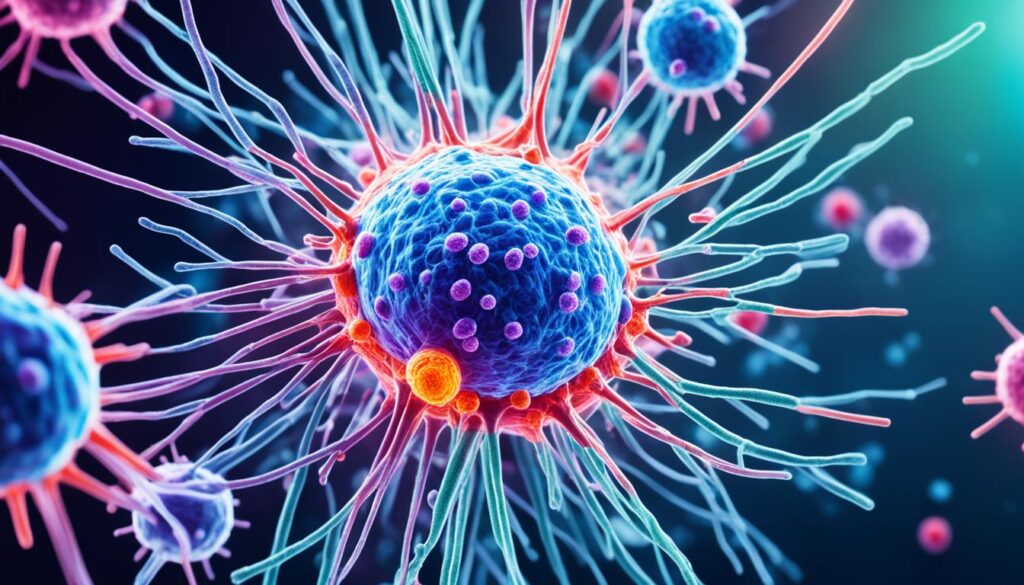
“Precision medicine has ushered in a new era of cancer treatment, where we can tailor therapies to the unique characteristics of each patient’s disease, leading to more effective and personalized care.”
Managing Side Effects and Quality of Life
Cancer treatment can bring many side effects that affect your body, feelings, and social life. It’s key to know about these side effects and how to handle them. This helps you live better during treatment.
One big side effect is feeling very tired. To fight this, rest well, do some light exercise, and take time for yourself. Activities like meditation can help too. Also, eating right is important for your energy.
Many people feel sick to their stomach or throw up. These can be managed with special medicines and changing what you eat. Eating foods that are good for you can also help feel better.
Dealing with pain is another big part of managing side effects. You can use medicines, therapy, and things like acupuncture to help. These can make you feel better and improve your life.
| Side Effect | Strategies for Management |
|---|---|
| Fatigue |
|
| Nausea and Vomiting |
|
| Pain |
|
Understanding and dealing with cancer side effects helps you work with your healthcare team. This way, you can keep a good quality of life during your supportive care.

“Taking care of your overall health and well-being is just as important as the cancer treatment itself.”
Supportive Care and Palliative Options
Cancer is a tough journey that needs more than just medical treatment. Cancer supportive care and palliative care are key in helping patients with cancer. They focus on the whole person, not just the illness. This means looking after their physical, emotional, and spiritual health, and that of their families.
Addressing Physical, Emotional, and Spiritual Needs
Supportive care offers many services to ease symptoms and improve life quality for cancer patients. These services include:
- Pain management and symptom control
- Nutritional counseling and dietary support
- Physical therapy and rehabilitation
- Psychological and emotional support
- Spiritual and religious guidance
By meeting these holistic care needs, healthcare teams help patients and families deal with cancer’s challenges. This lets them keep their dignity and focus on their health.
“Supportive care is not just about managing symptoms – it’s about supporting the whole person and their loved ones through this difficult time.”
Palliative care is a special kind of care that helps ease symptoms and stress from serious illnesses like cancer. It’s different from hospice care, which is for the end of life. Palliative care can start at any stage of cancer treatment, adding more support and comfort.

Together, the patient, their family, and the healthcare team work in palliative care. This approach aims to make life better for the patient and their loved ones. It helps with physical, emotional, and spiritual needs, easing the cancer burden. This way, patients can live more fully through their cancer journey.
Navigating Cancer Care: Resources and Support
Going through the healthcare system and finding the right resources can be tough for people and their families with cancer. But, there are many support services and groups ready to help. They guide patients and their families through tough times.
The American Cancer Society is a key resource. It offers many services, including:
- Information and education on cancer types, treatments, and management
- Emotional support through local and online support groups
- Transportation assistance to and from cancer treatment appointments
- Free lodging near treatment centers for out-of-town patients
- Financial assistance programs to help cover the cost of cancer care
There are also many other cancer care resources and oncology care groups. They provide counseling, legal help, and programs for survivors. These groups make it easier for patients and their families to get the support they need.
| Cancer Care Resource | Services Provided |
|---|---|
| CancerCare | Counseling, support groups, financial assistance, and educational resources |
| Oncology Nursing Society | Professional development, advocacy, and resources for oncology nurses |
| LIVESTRONG Foundation | Emotional support, navigation assistance, and survivorship programs |
Using all the cancer support services and resources helps people and their families. They can better navigate cancer care, get the support they need, and focus on their health during a hard time.
Prevention and Early Detection Strategies
Cancer prevention is not always possible, but we can take steps to lower our risk. By making healthy choices and getting regular check-ups, we can protect our health. This helps us play a key role in fighting cancer.
Lifestyle Modifications for Cancer Risk Reduction
Small changes in our daily lives can greatly help in cancer prevention. Here are some important steps:
- Eat a diet full of fruits, veggies, and whole grains
- Stay active with regular exercise
- Drink less alcohol and stop smoking
- Use stress-reducing activities like meditation or yoga
- Protect yourself from the sun’s harmful rays
These changes can greatly reduce the risk of getting different cancers. This includes lung, colon, breast, and prostate cancer. By focusing on our health, we can catch cancer early and improve our outcomes.

“An ounce of prevention is worth a pound of cure.” – Benjamin Franklin
Getting regular cancer screenings is key for early detection. Tests like mammograms, colonoscopies, and prostate exams can find problems early. This means we can treat them before they get worse. It’s important to talk to your doctor about when you should get screened based on your health and family history.
By being proactive in preventing cancer and catching it early, we can take control of our health. This makes us stronger and more confident in our fight against cancer.
Clinical Trials and Emerging Treatments
Cancer research and treatment are always changing. Clinical trials are key to this progress. They test new therapies and approaches. This gives patients access to the latest treatments before they’re widely used.
Being in a cancer clinical trial has many benefits. You could get new treatments not yet in regular care. You also help with cancer research and new treatments development. Plus, you get close medical care and support.
But, clinical trials have risks too. You might face side effects or the treatment might not work. It’s key to talk about the good and bad with your healthcare team before joining.
Exploring Clinical Trial Opportunities
If you’re looking into cancer clinical trials, here’s what to do:
- Talk to your oncologist or healthcare provider for advice and trial info.
- Use online databases like ClinicalTrials.gov to find studies and check if you qualify.
- Contact patient advocacy groups or cancer centers for trial lists.
- Do your homework and ask questions to make a well-informed choice.
Starting a cancer clinical trial can change your life. It could mean getting new treatments and helping cancer research. With the right info and a good healthcare team, you can move forward with hope.
“Clinical trials are the backbone of progress in cancer care. They give patients access to innovative treatments and allow us to push the boundaries of what’s possible.” – Dr. Emily Garson, Oncologist
Survivorship and Follow-Up Care
After cancer treatment, I focus on survivorship and follow-up care. This journey brings unique challenges and needs. It’s about getting my health and well-being back.
Regular check-ups are key. They help monitor for long-term side effects and address any issues. This ensures my recovery and quality of life.
Having a strong support network is vital. It helps with post-treatment care. Regular meetings with my oncology team are important too. We check my progress, adjust treatments, and tackle new issues together.
My health and emotional well-being are top priorities now. I make lifestyle changes and use stress management to feel normal again. As a cancer survivor, I’m grateful for this chance to move forward. I’m determined to live fully in the future.

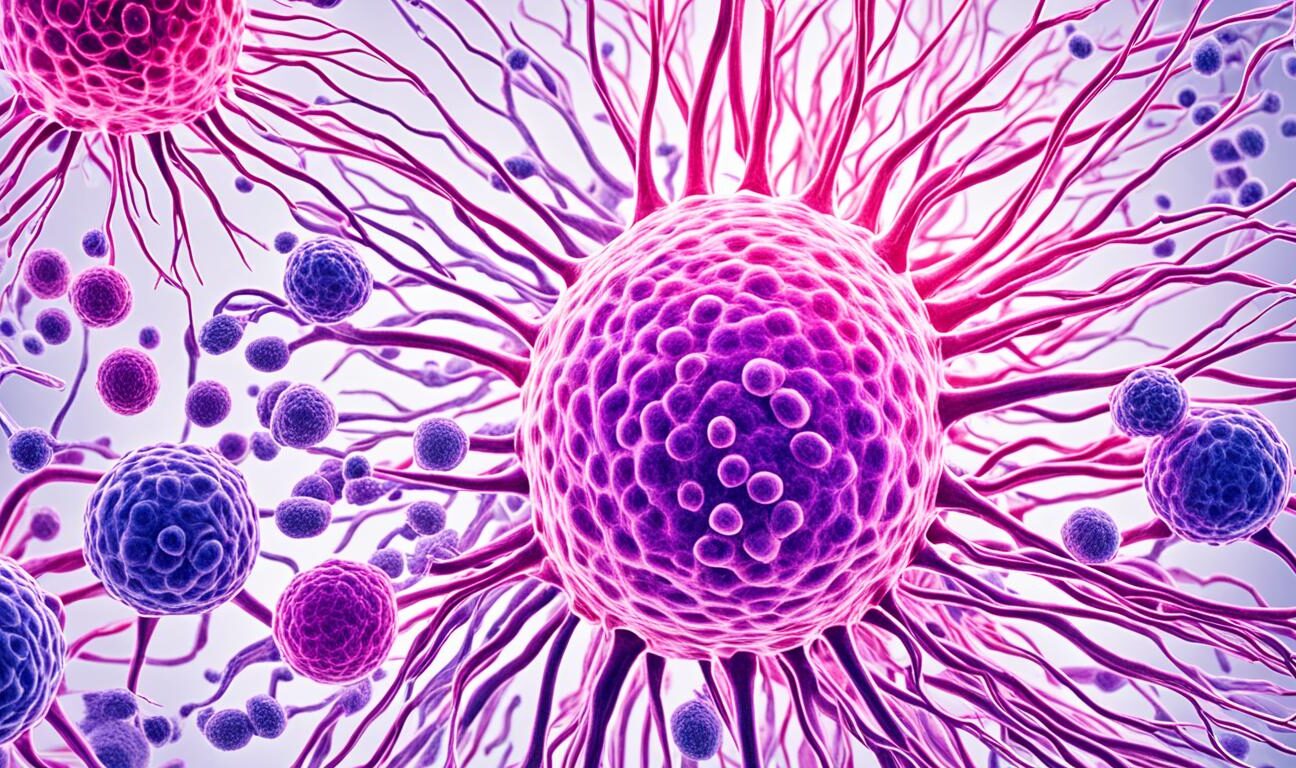
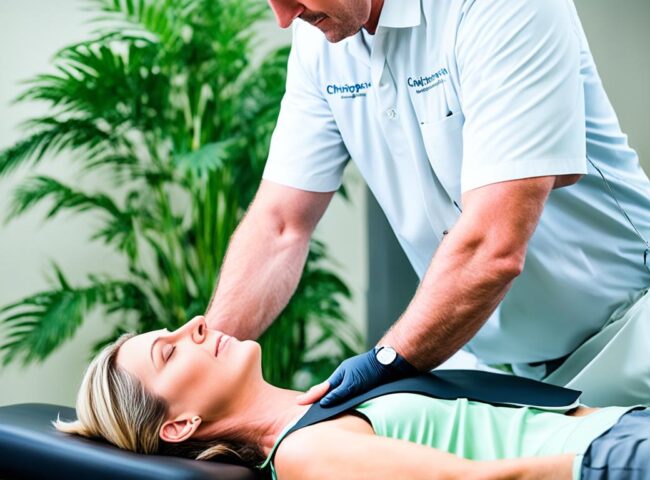




Leave feedback about this